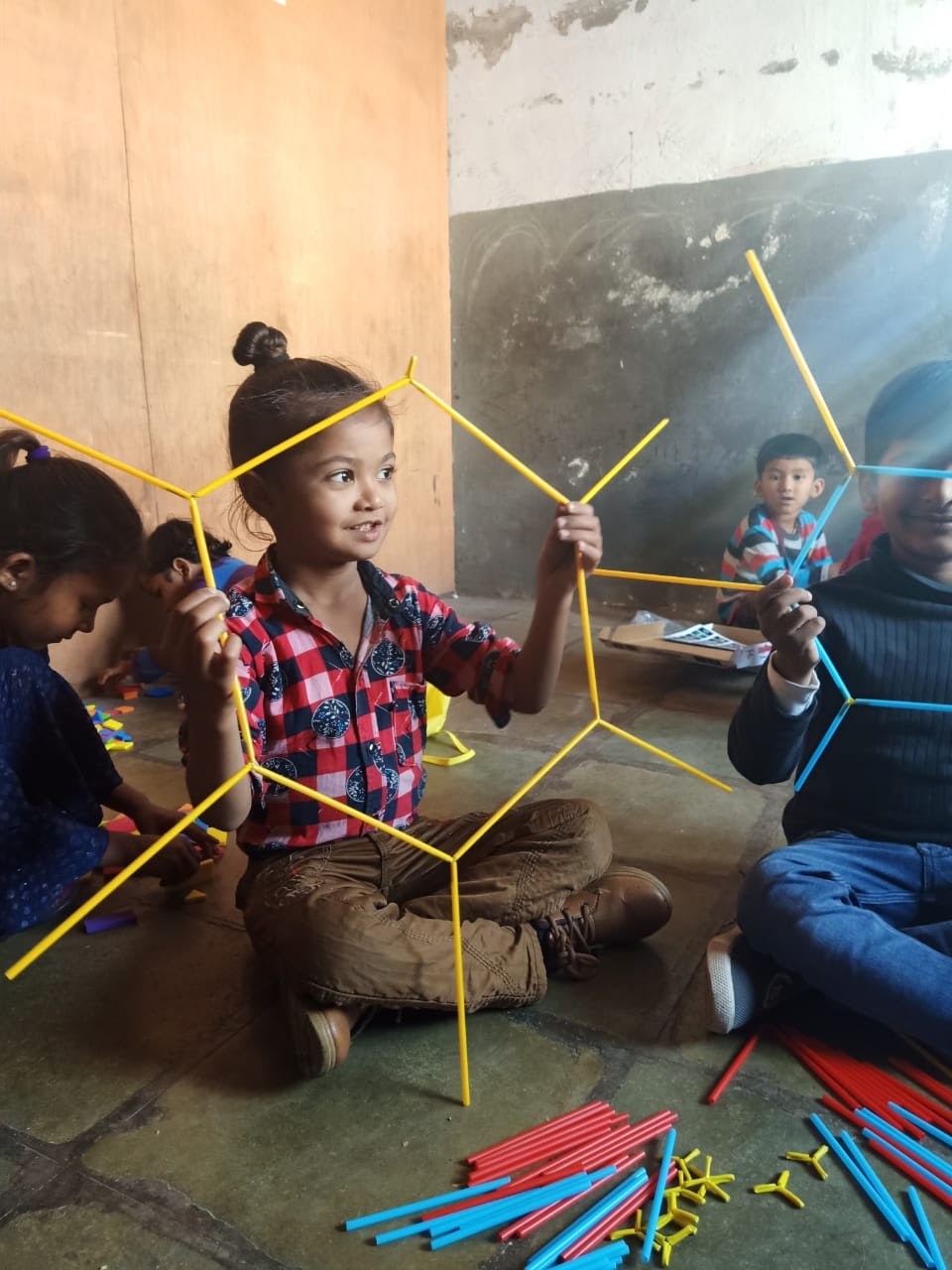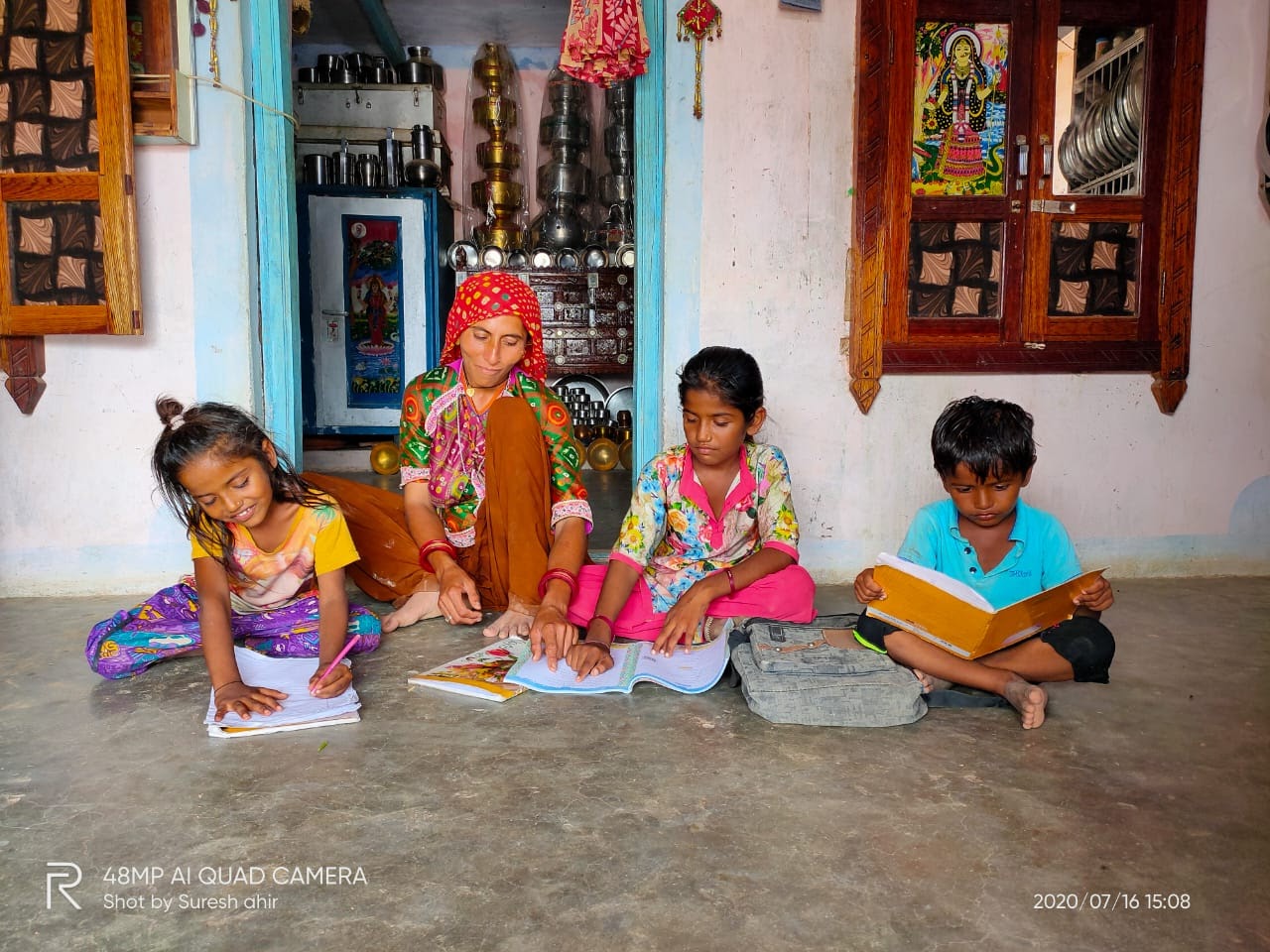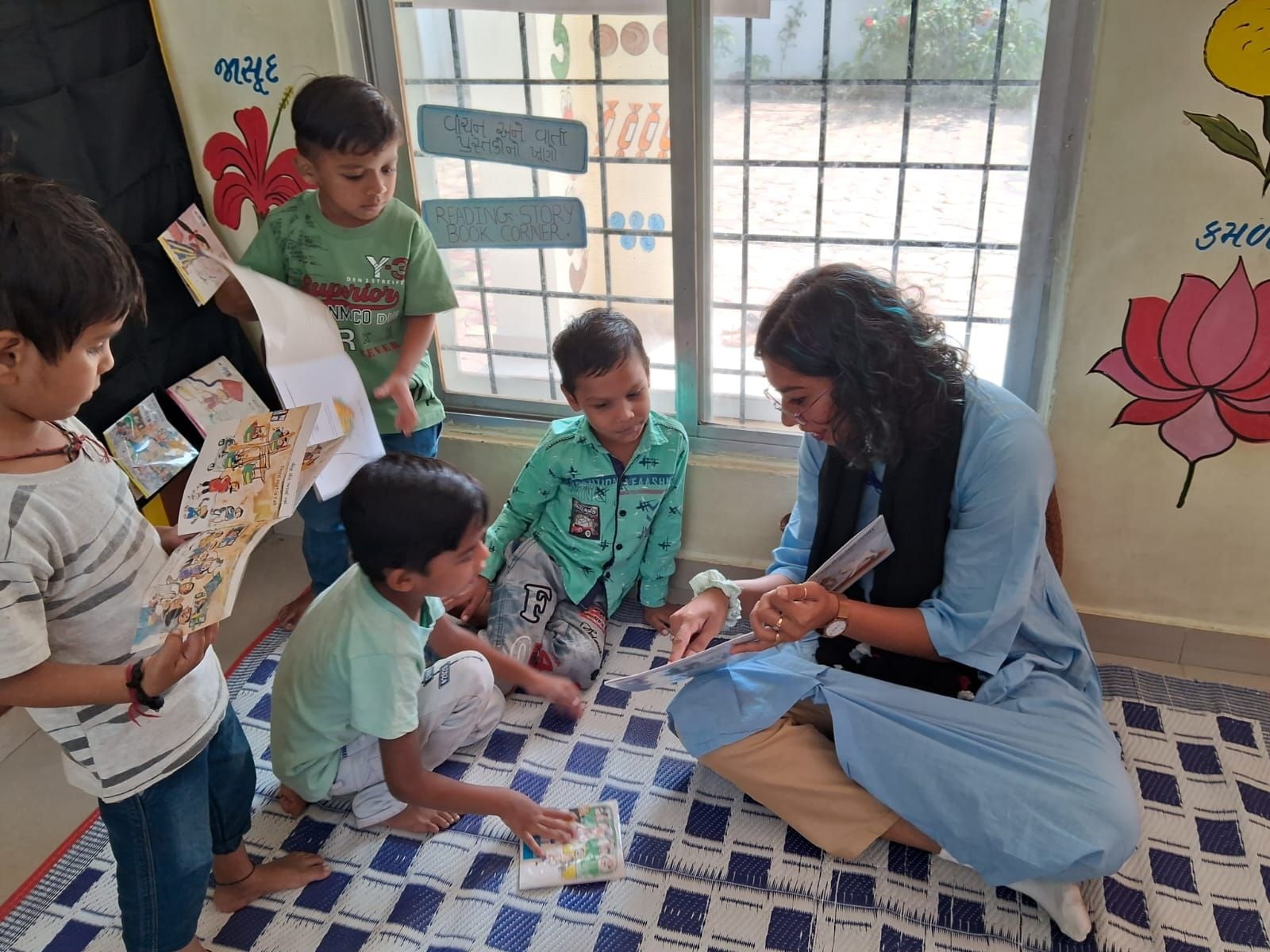PITARA
“Gardens and children need the same thing – patience, support, love and someone who will never give up on them”
-Nicollete Sowder
The Toy Library initiative by Neev Education Foundation aims to foster a love for learning through play. This program provides children access to a variety of toys, games, and puzzles, enhancing their cognitive and motor skills while promoting social interaction and creativity. By integrating play-based learning, the Toy Library supports early childhood development, helping children explore, imagine, and learn in a stimulating environment. This initiative also serves as a community resource, offering parents and caregivers tools to engage children in meaningful and educational play. Additionally, the Toy Library fosters community bonds and encourages shared learning experiences among children and their families. By creating a supportive and enriching play environment, the Toy Library contributes to the overall well-being and holistic development of young children.

The Problem:
Its an effort to ensure every household in the Aanganwadi communities have access to child-friendly learning materials for development of children. This toy library in community spaces will allow parents to borrow toys and learning resources for their children.
We aspire for transformation to take place when parents and community members are involved in shaping learning spaces for children and understand the importance of preschool education.

Our Approach:
What can Board Games, Blocks and Clay teach us about learning?
All learning experiences lie somewhere on the spectrum of control and autonomy.
At one end of the spectrum are Board Games Type Learning Experiences.
- Rules based
- Definite End Outcomes
- Objectives A given path
At the other end of the spectrum are Clay Type Learning Experiences.
- Ruled only by imagination
- Learner = Creator
- Explorative
And then somewhere in the middle are Block Type Learning Experiences.
- Rules that can be broken.
- Multiple outcomes yet defined boundaries.
A balanced learning opportunities will have elements of all 3 different types.

In contrast, Mayank will struggle to read single words, let alone sentences. His 1st grade teacher is not fluent in English, which is used as language of instruction, he cannot get extra help because there are more than 60 pupils in his class and there are no story books at school. Further, Mayank gets home from school tired because he walks two hours and fails to review his book and do homework properly. He lives with his old grandmother who can’t read and write, and they use a different language (colloquial Gujarati) at home. Little Mayank finds it hard to learn and lessons are sometimes confusing and not making sense. While his teachers will be doing their best to help him, soon enough, Mayank will start to lose motivation and dislike going to school. By the end of primary school, Maya will devour teenage novels while Mayank will struggle to read even a simple short story.
In The digital divide, the major challenge of remote learning is disparity in access – from electricity and internet connections to devices like computers or smartphones.
